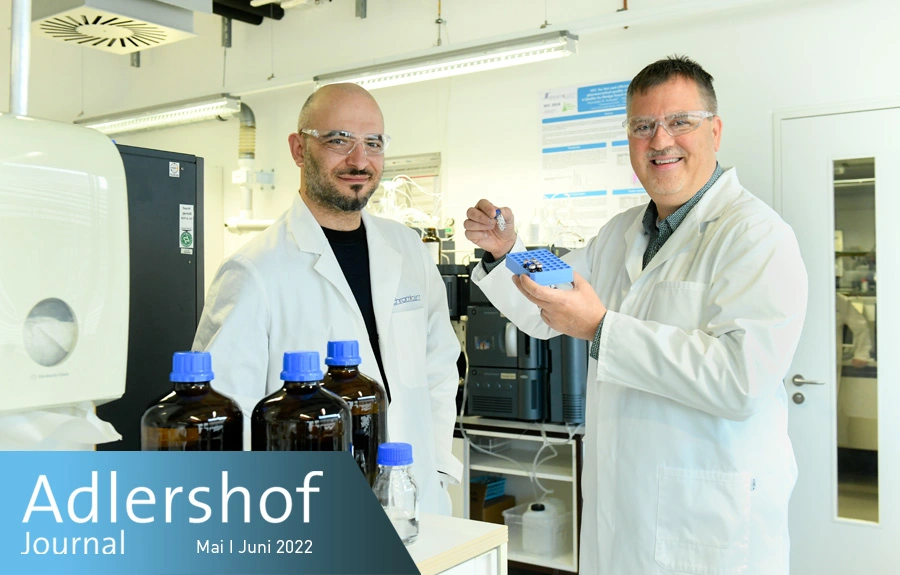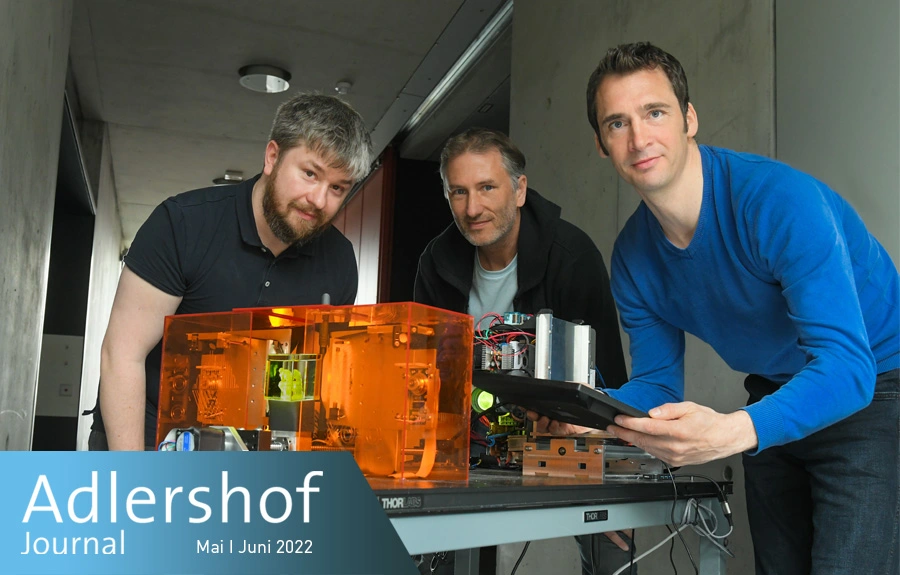The healing effect
Adlershof-based companies are showing the world what (green) biotechnology can achieve. We will introduce you to two of them that could change the rules of the game through their innovation
Many suspect them to be cancerous even in the smallest amounts and to damage the liver, kidneys, and DNA: nitrosamines. A substance like that should be kept far away from medicines. However, that’s exactly where the harmful substance was found due to contamination of blood pressure medication, out of all places, which patients tend to take every day and quite often for an entire lifetime.
Thankfully, there are companies to prevent this from happening, including the Adlershof-based Chromicent GmbH, a pharmaceutical service provider for chromatographic method development (chromatography: a technique used for separation chemical substances) and pharmaceutical analyses. The company not only ensures the safety of medication – with 1.6 million euros in sales and rising – but has also developed a procedure that helps to replace conventional methods, which are often harmful to the environment, with more sustainable alternatives. Eight years ago, CEOs Alexander Schmidt and his colleague Mijo Stanic founded the company with a clear goal: “By developing and establishing efficient and robust analysis methods, we want to contribute to faster, more reliable, and more cost-efficient drug development and quality assurance,” says Schmidt. With emphasis, he adds: “It is also a matter of course to us as a company that we adhere to and think differently about aspects of workplace safety and environmental protection.”
Both CEOs come from the pharmaceutical industry and know that analysis processes there tend not to be particularly safe for the environment or the climate. High-performance liquid chromatography (HPLC), for example, is seen as the gold standard for pharmaceutical quality control. However, it uses extremely harmful substances. Schmidt and his team have developed the antidote to this with their SFC technology (Supercritical fluid chromatography), which is also called “green chromatography”. “Instead of using chemicals that are harmful to the environment and the climate, we use carbon dioxide as the solvent in the procedure,” explains Schmidt. The effect: It makes possible to replace nearly 99 percent of all dangerous organic solvents of the conventional analysis method and 100 percent of all the toxic substances.
Moreover, it reduces costs as well as waste. “The method is fast, absolutely safe, and robust, and can easily be used all over the world,” says Schmidt. Everywhere includes poorer countries, which often have limited access to high-quality medicine. This, too, is sustainability. “We are convinced that our green chromatography technology will one day replace the HPLC gold standard,” says Schmidt, who was head of quality control in a medium-sized pharmaceutical company for 25 years.
He knows the processes – but he also knows which adjustments are necessary to make the pharmaceutical industry more environmentally friendly. In addition to the day-to-day business, five of the 18 employees are coming together in a working group to find out how to do this.
Xolo, a start-up, is demonstrating the differences of 3D printing and conventional methods and how it facilitates advances in biotech, medicine, and optics. The founders have developed a printer that looks a bit like a cube-shaped aquarium. What is special and unique about it is what happens on the inside. The object to be printed is projected into liquid resin in the form of a hologram. Using a laser, the resin is cured along this structure with pinpoint accuracy, turning the hologram into a physical product. This patented procedure has been dubbed “volumetric 3D printing”.
“While additive manufacturing typically builds objects layer by layer, our technology projects and hardens a complete object,” clarifies Dirk Radzinski, one of the xolo founders. “This is something fundamentally different.” The effects: Objects don’t have to be post-produced, it creates smooth surfaces previously impossible in 3D printing, and it’s fast, too. Radzinski: “Printing a three-centimetre object with high resolution takes about two to three minutes.” Conventional printers take between five and ten hours.
While speed is an important factor, what is even more important is the possibilities this process opens up, especially in biotech. It makes possible printing highly complex, arborescent structures, much like an arterial network, which are then used by the cells to grow organs. It also allows printing eye lenses of the highest optical quality for people with macular degeneration. Or custom-made mouth guards. The possibilities are endless. The only thing this innovation from Adlershof can’t do is print very large objects. “Xolography” shows its strength in the range between three millimetres and ten centimetres.
It looks like a revolution in 3D printing is upon us and especially the bioprinting market will benefit from it.
Chris Löwer für Adlershof Journal

